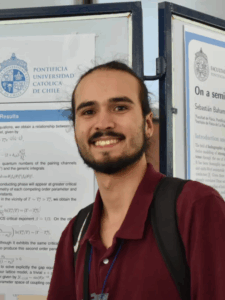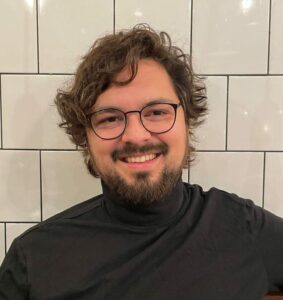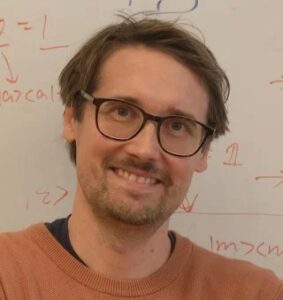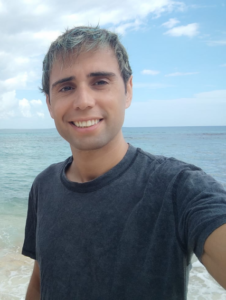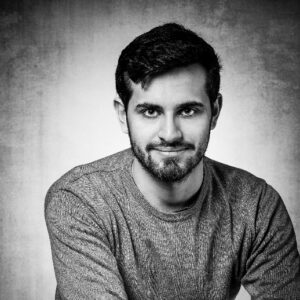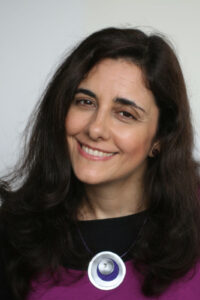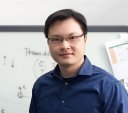Chirality—the property of an object that cannot be superimposed on its mirror image—is ubiquitous in nature. Like our hands, opposite versions of the same chiral molecule (R and S enantiomers) behave identically unless they interact with another chiral object. Molecular chirality is rapidly becoming essential in nanotechnology [1], e.g. for developing molecular motors and spintronic devices. The unbalance between R and S biomolecules on Earth (amino acids, sugars, DNA, etc.) supports life. This homochirality gives different biological activities to opposite versions of a chiral drug or pesticide, with profound implications for pharmaceuticals and agriculture. Moreover, abnormal enantiomeric ratios of chiral biomarkers have recently been linked to cancer, Alzheimer’s, diabetes, and other diseases [2].
Having efficient tools for rapid chiral discrimination is therefore vital. However, current optical methods are inefficient because they rely on the (chiral) helix that circularly polarised light draws in space. The pitch of this helix—determined by light’s wavelength—is ~10,000 times larger than the molecules. Consequently, the molecules perceive the helix as a flat circle, hardly feeling its chirality. This results in weak chiral sensitivity, typically <0.1%, which presents major limitations [3]. We can overcome these limitations by creating synthetic chiral light [4-6], where the tip of the electric-field vector traces a 3D chiral trajectory in time. This new type of chiral light can drive ultrafast chiral currents inside the molecules, which interact with the chiral molecular skeleton in a highly enantiosensitive manner, leading to 100% chiral sensitivity.
In this presentation, I will show how we can shape light’s polarisation in 3D to achieve highly efficient chiral sensing [4-10] and manipulation [11], together with theoretical and computational results that support the feasibility of our approaches. Current optical instrumentation enables several strategies for 3D shaping, such as using several laser beams that propagate non-collinearly [4-6,11], only one beam but tightly focused [7,8], vortex beams to create topological chiral light [9], or ultrafast TACOS [10]. I will discuss how we can bring these ideas to free-electron lasers (FEL), taking advantage of important developments in FEL science and technology that enable the generation of phase-locked two-colour radiation.
[1] J. Brandt et al, Nature Reviews Chemistry 1, 0045 (2017)
[2] Y. Liu et al, Nature Reviews Chemistry 7, 355 (2023)
[3] D. Ayuso et al, Phys Chem Chem Phys 24, 26962 (2022)
[4] D. Ayuso et al, Nature Photonics 13, 866 (2019)
[5] D. Ayuso et al, Nature Communications 12, 3951 (2021)
[6] J. Vogwell et al, Science Advances 9, eadj1429 (2023)
[7] D. Ayuso et al, Optica 8, 1243 (2021)
[8] L. Rego et al, Nanophotonics 12, 14, 2873 (2023)
[9] N. Mayer et al, Nature Photonics 18, 1155 (2024)
[10] J. Terentjevas et al, ArXiv:2406.14258v1 (2024)
[11] A. Ordóñez et al, ArXiv:2309.02392 (2023)
